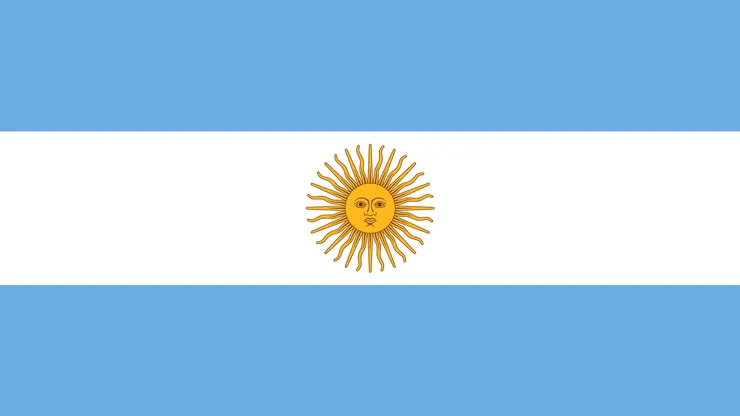Argentina Language: What Language is Spoken in Argentina?

Argentina is a country with a rich and diverse linguistic landscape. The main language spoken is Spanish, but it has a unique accent and style that sets it apart from other Spanish-speaking nations. Over the years, Argentina has been shaped by immigration, indigenous heritage, and cultural exchange.
This has created a mix of languages, dialects, and expressions that reflect its history and identity. From the widespread use of Rioplatense Spanish in Buenos Aires to the survival of indigenous and immigrant languages, Argentina’s language scene is both vibrant and complex.
The Main Language of Argentina
The main language of Argentina is Spanish. It is spoken by almost the entire population. Spanish in Argentina is not the same as in Spain or Mexico. It has its accent, vocabulary, and grammar rules. The variety most Argentines use is called Rioplatense Spanish. This dialect is spoken mainly around Buenos Aires and the Río de la Plata region. It has a distinctive sound that makes it unique among all Spanish dialects.
Spanish is not only the everyday language. It is also the language of government, business, schools, and media. Nearly everyone understands it. Because of this, Spanish works as the national unifying language.
Features of Argentine Spanish
Rioplatense Spanish
Rioplatense Spanish is the most common dialect in Argentina. It is well known for its voseo. Instead of using tú for “you,” Argentines use vos. This changes the way verbs are conjugated. For example, tú hablas becomes vos hablás.
Another feature is its pronunciation of the letters “ll” and “y.” In Argentina, these letters sound like the English “sh” in “she” or the “zh” in “measure.” This sound is very different from the “y” sound used in Spain.
The rhythm and tone of Rioplatense Spanish also carry influence from Italian immigrants. Many people notice that Argentines speak Spanish with a melody similar to Italian. This influence is so strong that it affects not only pronunciation but also everyday expressions.
Lunfardo: Local Slang
In addition to standard speech, Argentina is famous for its slang called Lunfardo. This form of speech developed in Buenos Aires during the 19th century. It mixed Italian, Spanish, and words from other immigrant languages. At first, it was used by the working class and in tango lyrics. Today, Lunfardo expressions are widely understood and form part of Argentina’s cultural identity.
READ MORE
Other Languages Spoken in Argentina

Immigrant Languages
Argentina has received millions of immigrants over its history. Many of them brought their languages with them. The second most spoken immigrant language is Italian. Around 1.5 million people still speak it at home.
Arabic, especially Levantine Arabic, is spoken by the descendants of Syrian and Lebanese immigrants. About 1 million people use it.
English is also widely spoken, especially as a second language. Around 2.5 to 3 million people understand it. It is taught in schools and used in business and tourism.
Other European languages also exist in Argentina. These include German, Yiddish, Catalan, Ukrainian, Polish, and Japanese. A special case is Welsh, which is still spoken in Patagonia by about 5,000 people. Welsh settlers preserved their traditions and schools, making this a rare example of a European minority language surviving in South America.
Indigenous Languages
Argentina has more than 40 indigenous languages. Together, about 1.2 million people speak them. The most common are Guaraní, Quechua, Wichí, Mapudungun, and Mocoví.
- Guaraní is spoken by around 200,000 people. In Corrientes province, it is even recognized as co-official with Spanish.
- Quechua has more than 65,000 speakers. It is spoken in the northwest, especially in Santiago del Estero and Jujuy.
- Wichí is spoken by more than 50,000 people, mainly in the Chaco region.
- Other important native languages are Toba (Qom), Pilagá, Aymara, and Mapudungun.
Indigenous languages face challenges today. Many are spoken by small communities, and some are at risk of extinction.
Endangered and Revived Languages
Some indigenous languages have only a few speakers left. Examples include Vilela, Chaná, Selk’nam, and Tehuelche. The case of Chaná is remarkable. For nearly 200 years it survived in secret, and now only two known speakers remain. Efforts are being made to preserve it through dictionaries and teaching projects.
Language Percentages in Argentina
The percentage of Spanish speakers is more than 95%. Almost everyone speaks it fluently. Around 3% of the population speaks an indigenous language as a first or second language. Immigrant languages like Italian, Arabic, and German together make up less than 5%. English, although not a native language, is widely studied and understood by younger generations.
READ MORE
Argentina Language and Identity
Language is part of Argentina’s cultural identity. Spanish connects the country, but diversity of tongues shows its rich history. The mix of Spanish, Italian influence, and Lunfardo shaped Argentina’s unique way of speaking. At the same time, indigenous and immigrant languages highlight the multicultural roots of the nation.
The Argentine government and cultural groups work to preserve this diversity. In provinces like Chaco and Corrientes, bilingual education programs exist. Some universities also offer programs to study and revitalize indigenous languages.
Final Thoughts
When asking what is Argentina language, the answer is simple and complex at the same time. Spanish dominates the country and unites its people. But Argentina is also a land of many voices. From Italian and Arabic to Guaraní and Welsh, its language map is rich and colorful. The challenge today is to keep this diversity alive while maintaining Spanish as the common bond of national identity.
